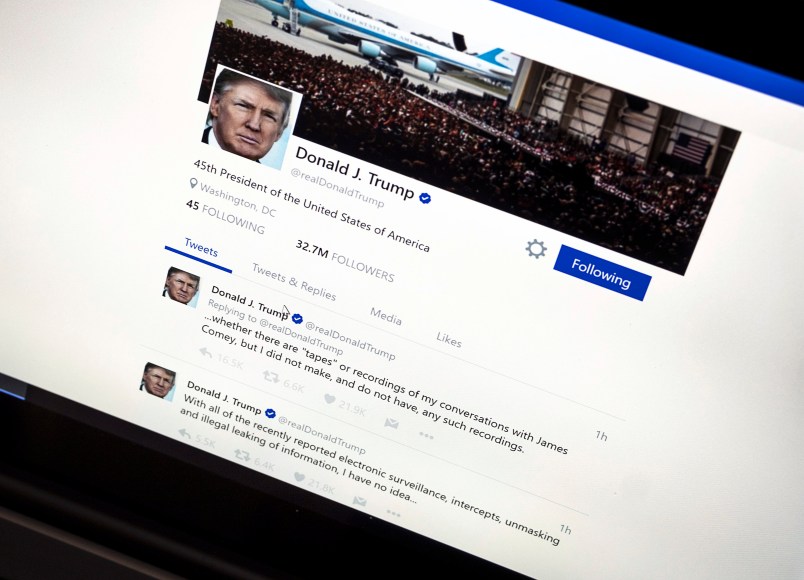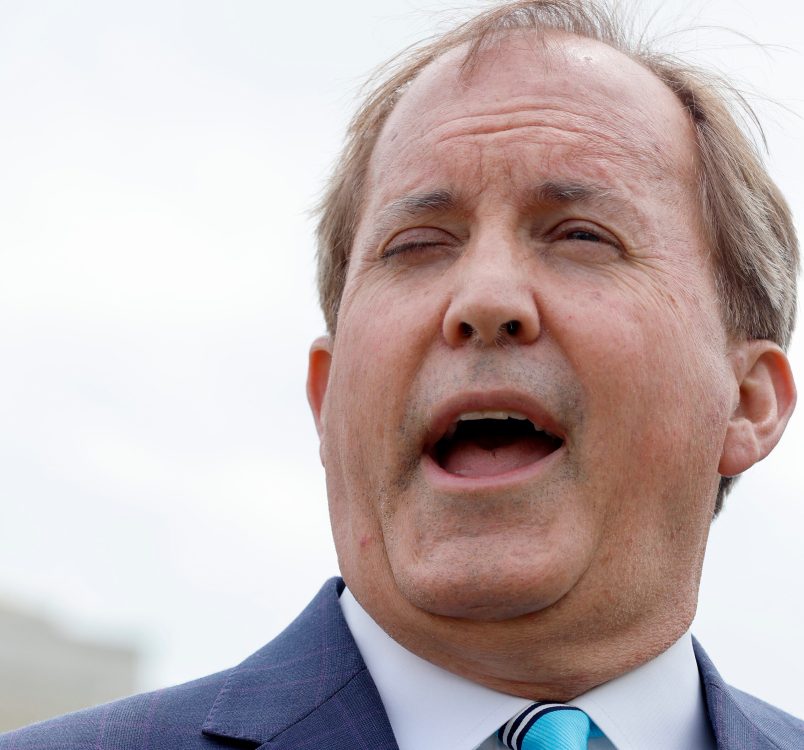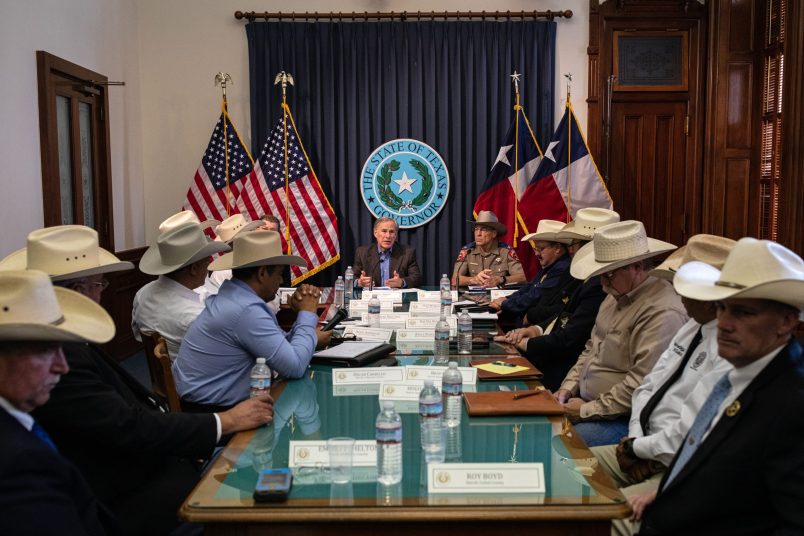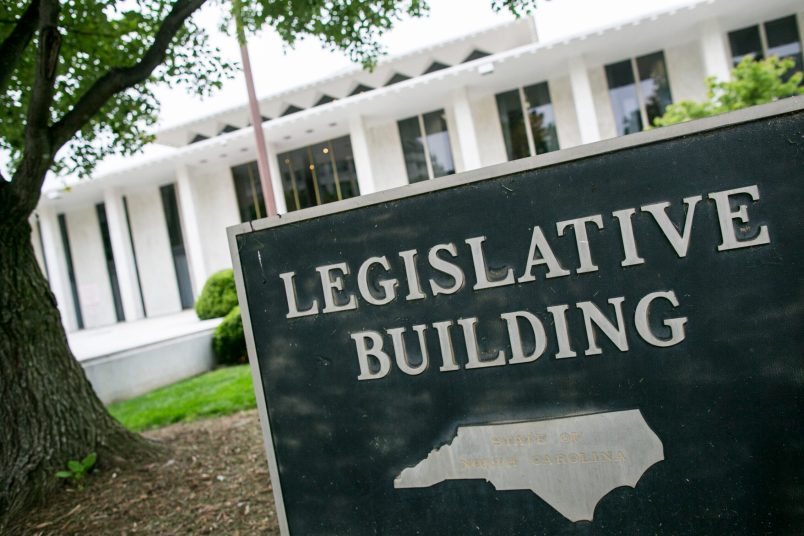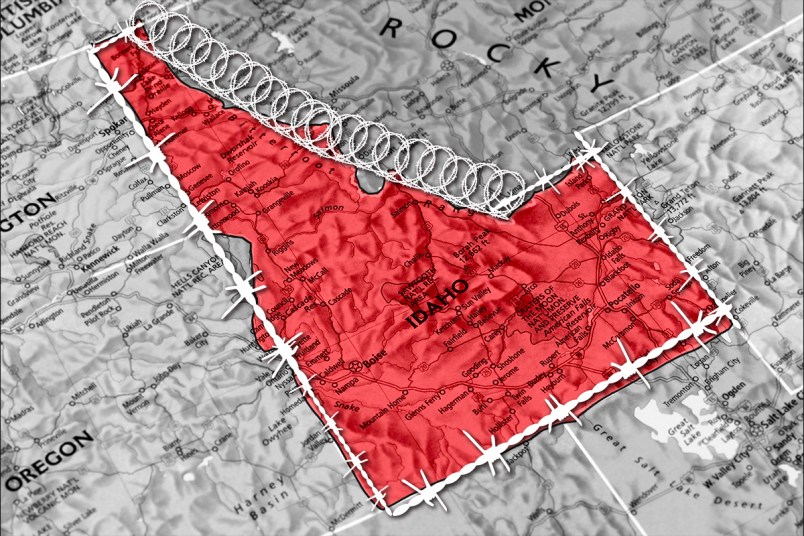The President’s multi-day war with Twitter finally came to a peak.
President Trump signed an executive order on Thursday that would allow his administration to punish websites it doesn’t like for allegedly censoring speech that the government supports.
But beyond all the bark and relative lack of bite that’s become the signature attribute of Trump’s executive orders, today’s effort will allow him to continue to play the victim of big tech.
Below are five points to help understand the order and what may lie ahead.
Trump is reacting to Twitter fact-checking him for saying, falsely, that fraud was rampant with mail-in voting.
The backstory for all this is Twitter’s decision this week to add a label “fact-checking” tweets that President Trump posted saying that mail-in voting during the pandemic would lead to massive voter fraud.
Apart from being unfounded and nakedly in Trump’s political interest in November, the tweeted claims came alongside others falsely accusing MSNBC host Joe Scarborough of murder, leading to separate outcry and calls for Twitter to act in some way.
There is NO WAY (ZERO!) that Mail-In Ballots will be anything less than substantially fraudulent. Mail boxes will be robbed, ballots will be forged & even illegally printed out & fraudulently signed. The Governor of California is sending Ballots to millions of people, anyone…..
— Donald J. Trump (@realDonaldTrump) May 26, 2020
The tech giant’s move infuriated Trump — and provided him with reason to up his pressure campaign on social media platforms.
Trump also played on claims that right-wing social media users have been making for years, to the effect that large social media platforms supposedly “shadowban” them — a process by which the platforms supposedly retool their algorithms to restrict access to right-wingers, all part of the vast liberal conspiracy that supposedly animates big tech (and a misreading of how the algorithms actually work).
Republicans feel that Social Media Platforms totally silence conservatives voices. We will strongly regulate, or close them down, before we can ever allow this to happen. We saw what they attempted to do, and failed, in 2016. We can’t let a more sophisticated version of that….
— Donald J. Trump (@realDonaldTrump) May 27, 2020
Trump’s response is an attempt to expose social media platforms to new liability.
The White House used the aftermath of of the Twitter fact-checking fracas to roll out an executive order that aims to reduce the liability of social media giants for content on their platforms.
The order has been under discussion for months. The idea was reportedly floated last year during a July 2019 “social media summit” at which the President huddled influential online supporters.
Trump signed the order on Thursday afternoon.
Appearing with Attorney General Bill Barr, Trump revealed the kayfabe of the whole exercise: “If you’re gonna have a guy like this be your judge and jury, I think you shut [Twitter] down, as far as I’m concerned,” he said, referring to Twitter’s fact checks.
Asked how he would do it, he replied, “I don’t know. I’d have to ask the lawyers. I’d have to go through a legal process.”
Barr followed up on that, delivering a slightly more lucid if not darker explanation, saying that tech companies were akin to publishers who started off as free forums, but now, having expanded, now flex their muscles to achieve political aims.
There could be years of court fights ahead, with wavering support.
The maximalist interpretation of the order would see the Trump administration gaining a foothold in the content decisions made by social media companies. In all likelihood, it will lead to a legal fight: the executive order seems to fly in the face of years of court decisions.
The order urges the Federal Trade Commission to reinterpret Section 230 of the Communications Decency Act, a 1996 provision that stops companies from being held liable for content on their platforms.
With the executive order, however, the government would arrogate itself the power to remove that liability should it find that a social media firm was censoring or editing content.
The details, or potential effects of this — and even whether the FTC or Federal Communications Commission will act — remain completely unclear. Legal experts have said that the policy is likely to be both challenged and defeated in court.
Barr said at the Thursday presser that he would work with states on developing regulations around online content, and that the Trump administration would develop policies to ensure that tax dollars don’t flow to tech firms that allegedly “suppress free speech.”
That’s already a comedown from what was being leaked earlier today: That the federal government would completely withdraw from advertising on Facebook and Twitter.
A proposal similar to that in the executive order was made last year by none other than Facebook founder Mark Zuckerberg. At the time, Brendan Carr, a Trump appointee to the Federal Communications Commission, expressed dismay at the idea, saying that “outsourcing censorship to the government is not just a bad idea, it would violate the First Amendment.”
Facebook says it’s taking heat for the mistakes it makes in moderating content. So it calls for the government to police your speech for it.
Outsourcing censorship to the government is not just a bad idea, it would violate the First Amendment.
I’m a no.https://t.co/1q5k1OxS42
— Brendan Carr (@BrendanCarrFCC) March 31, 2019
This has all prompted a spat between Twitter and Facebook CEOs.
The order provoked a dustup (or jockeying for favor) between Zuckerberg and Twitter CEO Jack Dorsey, with Zuckerberg accusing Dorsey on Fox News of trying to be the “arbiter of truth.”
“We have a different policy than, I think, Twitter on this,” Zuckerberg said in a Wednesday interview with Dana Perino of Fox News.
“I think, in general, private companies probably shouldn’t be — or especially these platform companies — shouldn’t be in the position of doing that,” Zuckerberg added.
The comments were met with derision by Twitter CEO Jack Dorsey, who replied to Zuckerberg in a tweet thread, defending his company’s fact checks.
“This does not make us an ‘arbiter of truth,'” Dorsey wrote. “Our intention is to connect the dots of conflicting statements and show the information in dispute so people can judge for themselves. More transparency from us is critical so folks can clearly see the why behind our actions.”
The sense of grievance will continue.
Even without actual bite, the executive order provides Trump with more ways to make unsupported claims of institutional bias against him.
Without evidence, Trump and his co-partisans have long claimed that social media giants victimize them and electronically persecute them for their right-wing beliefs, either by reducing access to their postings or by outright banning certain users.
Incidentally, the executive order also comes on the same day that D.C. District Judge and Trump appointee Trevor McFadden threw out a lawsuit filed by conservative activists against Twitter, Facebook, and others, accusing the platforms of having a bias against the right-wing, finding that the platforms were not “state actors.”
But the executive order allows the culture war to continue. If the FCC and FTC were to Act on Trump’s order, and if it were to survive court challenges — both big ifs — the government would be able to probe Twitter and other social media giants for documentation of the supposed bias, without any evidence ever needing to be found.
The fact of suspicion would be enough to further cloud our information landscape.


